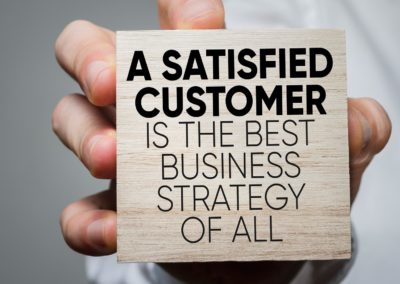The single easiest way to make more money in 2020 is to improve conversions of existing leads.

Think about it: You have to spend money to acquire a lead. Once you have some leads, somewhere between 0%–35% of them will buy. What if we simply knew your numbers and got more leads to convert into customers? Wouldn’t that be cheaper and easier than finding more lead sources you can convert?
For most companies, the cost of lead conversion is far less than the cost of generating a new lead, which is why this is a simple way to make sure you crush it in 2020.
To start, the first thing you need to do is get accurate numbers about your potential leads. I can’t tell you how important this is in your business overall, but it is especially important when it comes to sales. If there are any numbers you should know in your business, it’s the following ones.
Qualified Leads
 We use total qualified leads as our primary number here at The Newsletter Pro. This number excludes bad leads, and understanding what makes a good lead is a good starting point for your company. For us at The Newsletter Pro, a bad lead is someone who doesn’t have a real business or is just starting out. We track total bad leads to make sure we don’t have a lead-quality issue with any of our lead sources. Once we know our good lead and bad lead numbers, the other number we look at is total leads with unknown quality. This could be someone who registered on a webinar but didn’t take our free offer that would have given us the full contact info we’d need to qualify the lead.
We use total qualified leads as our primary number here at The Newsletter Pro. This number excludes bad leads, and understanding what makes a good lead is a good starting point for your company. For us at The Newsletter Pro, a bad lead is someone who doesn’t have a real business or is just starting out. We track total bad leads to make sure we don’t have a lead-quality issue with any of our lead sources. Once we know our good lead and bad lead numbers, the other number we look at is total leads with unknown quality. This could be someone who registered on a webinar but didn’t take our free offer that would have given us the full contact info we’d need to qualify the lead.
Leads To Opportunities, Opportunities To Customers
 The next area to look at is how those leads translate into opportunities. If you have 100 quality leads and can’t get any of them to make a sales meeting, then your leads aren’t doing you a ton of good. Those who do will become your qualified opportunities.
The next area to look at is how those leads translate into opportunities. If you have 100 quality leads and can’t get any of them to make a sales meeting, then your leads aren’t doing you a ton of good. Those who do will become your qualified opportunities.
The final number you should consider is how many qualified opportunities you have and how many of those turn into an appointment.
Leads And Opportunities In Action
 Let’s assume you generate 100 leads and are able to qualify 63 of them. Now you have 63 qualified leads. 18 of your qualified leads (29%) become opportunities for your salespeople to get on a sales call. Of those opportunities, your salespeople convert 6 (33%) of those qualified opportunities and turn them into new customers.
Let’s assume you generate 100 leads and are able to qualify 63 of them. Now you have 63 qualified leads. 18 of your qualified leads (29%) become opportunities for your salespeople to get on a sales call. Of those opportunities, your salespeople convert 6 (33%) of those qualified opportunities and turn them into new customers.
These numbers aren’t bad, but they’re also not great.
Let me ask you this, though: What if we could make a few simple tweaks to these numbers and have a massive impact? If we worked hard and were able to make small improvements on the above numbers, would it be worth the time and effort?
A Few Simple Tweaks
 In this scenario, there are 3 easy tweaks you could make to have an impact on total new sales. The number to work on is the number of qualified leads. We have 100 leads coming in, but only 63 are qualified. In this scenario, we could easily improve this number by 20% to get a total of 75 qualified leads by making more offers or adjusting lead sources. Either way, a 20% jump isn’t a big ask based on the current conversion.
In this scenario, there are 3 easy tweaks you could make to have an impact on total new sales. The number to work on is the number of qualified leads. We have 100 leads coming in, but only 63 are qualified. In this scenario, we could easily improve this number by 20% to get a total of 75 qualified leads by making more offers or adjusting lead sources. Either way, a 20% jump isn’t a big ask based on the current conversion.
The next goal will be to make a small improvement to our opportunity conversions. It wouldn’t take much effort to go from 29% conversion to 33% conversion. With the improvement in both the number of qualified leads and lead opportunities, we increase 18 opportunities to 25 total opportunities.
If that was all you did, you’d be in good shape. But what if you could also improve our close rate? Of course, this is the most difficult number to improve, so let’s make the smallest tweak here. By improving your sales conversion number by just 2%, you’d go from 6 new sales per 100 leads to 9 sales per 100 leads. Although we only made 3 small tweaks to our numbers, we actually increased total new customers by 50%!
Is It Worth It?
 Take a second and think about the above info: A 50% increase in new customers is massive. From an investment standpoint, it costs a fraction of the money to improve your conversion numbers as opposed to figuring out how to generate 50 more leads, which is what would be required if you wanted to get the same increase in sales without first knowing your numbers and tweaking them.
Take a second and think about the above info: A 50% increase in new customers is massive. From an investment standpoint, it costs a fraction of the money to improve your conversion numbers as opposed to figuring out how to generate 50 more leads, which is what would be required if you wanted to get the same increase in sales without first knowing your numbers and tweaking them.
Here’s my final question for you: Is it worth it? Of course, we won’t know until you run the numbers, but in my experience, few businesses are run well enough that they can’t find areas to improve in the above categories — and those simple tweaks will ultimately lead to bigger profits in 2020.






